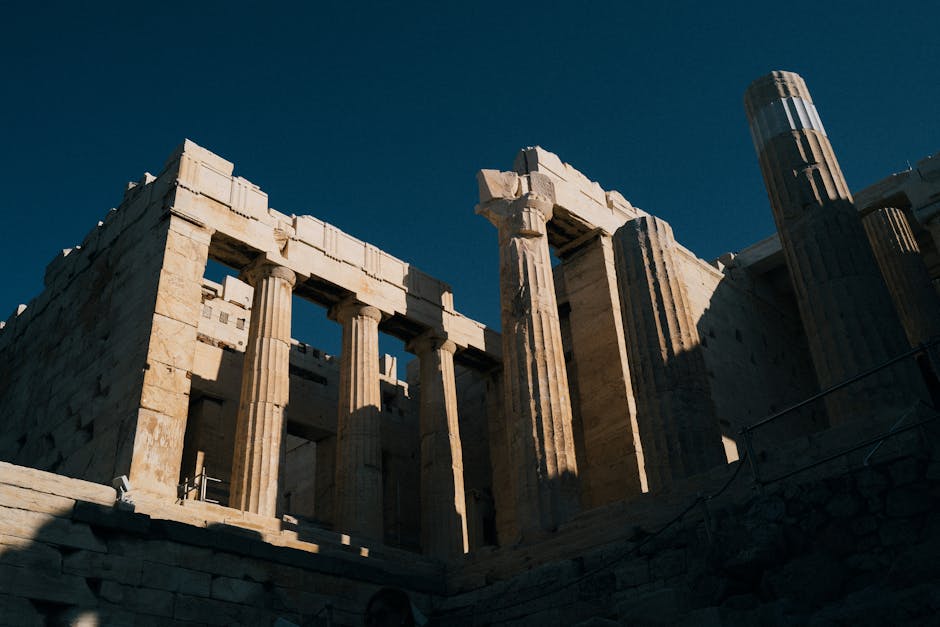⏱️ 4 min read
Top 10 Lost Cities and Civilizations
Throughout history, numerous civilizations have risen, flourished, and mysteriously vanished, leaving behind fascinating ruins and unanswered questions. These lost cities and civilizations continue to captivate archaeologists, historians, and curious minds worldwide. Here are ten of the most remarkable lost cities and civilizations that have shaped our understanding of human history.
1. Petra, Jordan
Hidden within the red rock cliffs of southern Jordan, Petra was the capital of the Nabataean Empire. Built around 312 BCE, this architectural marvel features buildings carved directly into rose-colored stone walls. The city remained unknown to the Western world until 1812 when Swiss explorer Johann Ludwig Burckhardt rediscovered it. Petra’s most iconic structure, the Treasury (Al-Khazneh), stands as a testament to the remarkable engineering capabilities of ancient civilizations.
2. Mohenjo-daro, Pakistan
One of the largest settlements of the ancient Indus Valley Civilization, Mohenjo-daro was built around 2500 BCE. This remarkably well-planned city featured advanced urban planning, sophisticated drainage systems, and multi-story buildings. The civilization mysteriously declined around 1900 BCE, leaving behind artifacts that suggest a highly advanced society with standardized weights, measures, and writing system.
3. Angkor, Cambodia
The capital of the Khmer Empire, Angkor was the largest pre-industrial urban center in the world. Built between the 9th and 15th centuries, it spread over 400 square kilometers. The iconic Angkor Wat temple complex remains the world’s largest religious monument. The city’s sophisticated water management system supported a population of up to one million people before its eventual decline.
4. Machu Picchu, Peru
Built in the 15th century at the height of the Inca Empire, Machu Picchu was hidden from the world until American explorer Hiram Bingham discovered it in 1911. This “Lost City of the Incas” showcases incredible architectural precision, with stones fitted so perfectly that no mortar was needed. The site’s purpose remains debated, but it likely served as a royal estate for Inca emperor Pachacuti.
5. Pompeii, Italy
The Roman city of Pompeii was frozen in time when Mount Vesuvius erupted in 79 CE. The volcanic ash that destroyed the city also preserved it, providing an unprecedented snapshot of Roman life. Excavations have revealed detailed frescoes, everyday objects, and even preserved human bodies, offering invaluable insights into ancient Roman society and urban life.
6. Tikal, Guatemala
One of the most powerful kingdoms of the ancient Maya, Tikal dominated Mesoamerica from 200 to 900 CE. The city features impressive pyramid-temples, palaces, and public squares. At its peak, Tikal’s population may have reached 90,000. The city’s decline coincided with the broader collapse of Maya civilization, possibly due to environmental degradation and political instability.
7. Troy, Turkey
Made famous by Homer’s “Iliad,” Troy was long thought to be merely legendary until Heinrich Schliemann discovered its ruins in the 1870s. Archaeological excavations have revealed nine different cities built on top of each other, spanning over 3,000 years of history. The site offers valuable insights into ancient Mediterranean trade networks and urban development.
8. Great Zimbabwe, Zimbabwe
The capital of the Kingdom of Zimbabwe from the 11th to 15th centuries, Great Zimbabwe was the largest medieval city in sub-Saharan Africa. Its most impressive features are the Great Enclosure and the Valley Complex, built without mortar using sophisticated dry-stone construction techniques. The site demonstrates the existence of advanced African civilizations before European colonization.
9. Helike, Greece
This ancient Greek city was suddenly destroyed by an earthquake and tsunami in 373 BCE. The disaster was so complete that the city vanished beneath the waves, creating one of the first recorded “Atlantis” stories. Rediscovered in 2001, Helike has provided valuable information about ancient Greek urban planning and natural disasters in the ancient world.
10. Cahokia, United States
Located near present-day St. Louis, Cahokia was the largest pre-Columbian settlement north of Mexico. At its peak around 1100 CE, it was larger than contemporary London. The city featured massive earthwork mounds, including Monks Mound, the largest prehistoric earthen construction in the Americas. Cahokia’s sudden abandonment around 1350 CE remains a mystery.
Conclusion
These lost cities and civilizations represent some of humanity’s greatest achievements and most intriguing mysteries. Each site offers unique insights into ancient engineering, architecture, social organization, and the complex factors that can lead to a civilization’s decline. Their discovery and ongoing study continue to reshape our understanding of human history and capability. Through modern archaeological techniques and technologies, these ancient sites continue to reveal new secrets about our shared past, reminding us of the remarkable achievements of our ancestors and the temporary nature of even the greatest civilizations.


